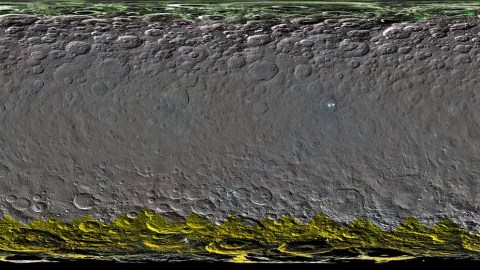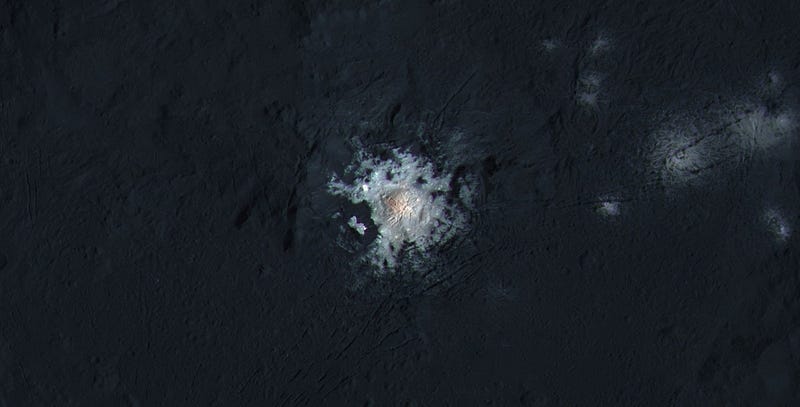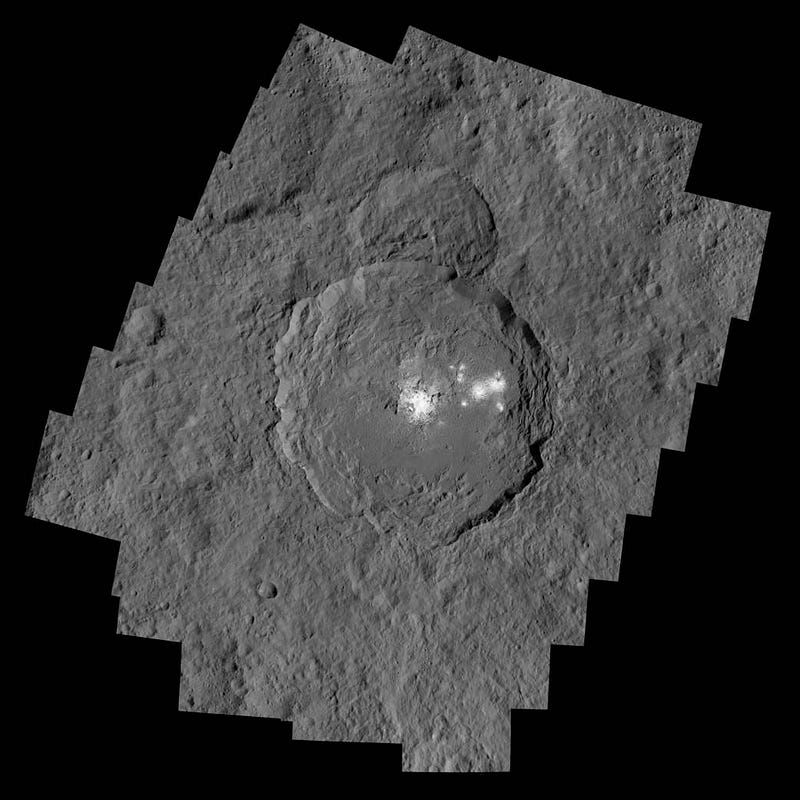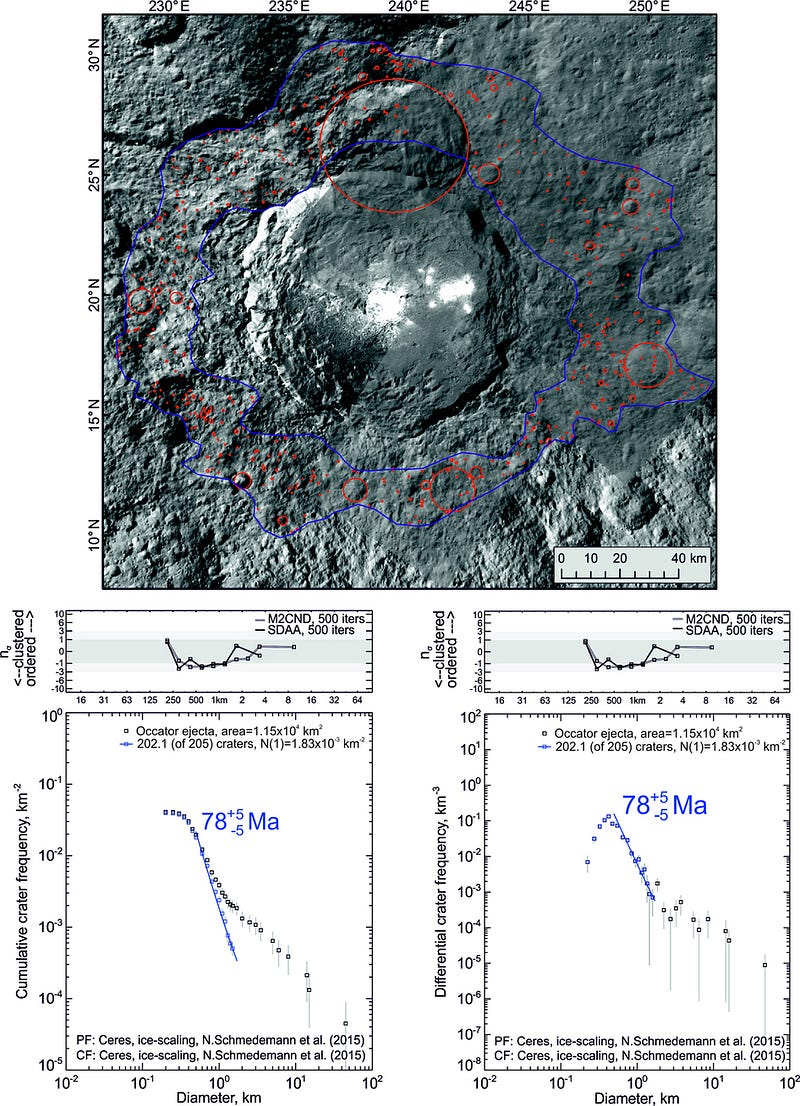Ceres bright spots are salts!

And are likely due to subsurface water, geysers and an incredible process.
“Have you entered the springs of the sea? Or have you walked in search of the depths?” –Job 38:16
When NASA’s Dawn spacecraft visited Ceres, the largest world in the asteroid belt, its brightest feature was a huge surprise.
In the center of Occator crater, a large (but not the largest) feature on Ceres’ moon-like surface exhibits a series of bright, white spots along the crater floor.

As Dawn flew closer, it was able to perform a distant chemical analysis, determining that this wasn’t ice or aliens, but rather salts that were so reflective.

The dome-like structure is at a depth of 4 km (2.5 miles) below the surface, deeper than anything else known.

But the big surprise, as new analysis shows, is that the salts are sodium carbonates, not magnesium sulfates, indicating that at least the surface contains icy, Kuiper-belt like materials.

This represents the largest concentration of carbonate materials in the Solar System outside of Earth. An impacting asteroid could not have delivered them, indicating a recent hydrothermal origin from within Ceres itself.

At the pressures interior to Ceres, liquid, briny water could have existed, depositing salts and then sublimating, leaving the reflective, bright carbonates behind.
These carbonates may be abundant across the surface, as future Dawn data will reveal.
Mostly Mute Monday tells the story of a single astronomical phenomenon or object primarily in visuals, with no more than 200 words of text.
This post first appeared at Forbes, and is brought to you ad-free by our Patreon supporters. Comment on our forum, & buy our first book: Beyond The Galaxy!





